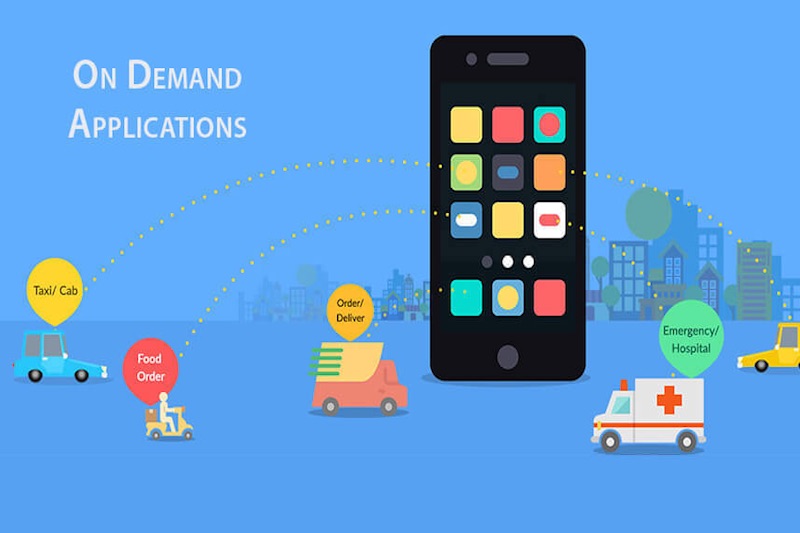On-demand Applications, a primer

Be it ordering food or booking a cab, we’ve all used an on-demand app at some point in our lives. These are the apps that act as an interface between the customer and the service provider. Now commonplace, these apps really caught traction with the launch of services like Uber and Airbnb and they really make lives more convenient by providing a vast range of services at your fingertips.
The on demand economy is inflating like anything. These apps are all the trend these days and for good reason. The on-demand market is roughly 22.4 million annually, doing a business of $57.6 billion. In a study conducted by Harvard Business Review, it was found that 39% of these users are millennials. This gives us reason to believe that the millennial lifestyle has the need and demand for this kind of service apps.
This has disrupted traditional service oriented businesses in a significant manner and people from different industries are looking at ways they can adapt to this change that has the potential to revolutionise the said industries.
On-demand applications have allowed users to bypass expensive and relatively inefficient companies by allowing them to deal with individual service providers directly. Companies from Netflix to Airbnb have all benefited in this way by using the business model similar to Uber.
The largest share in this economy is, however, covered by e-commerce giants such as eBay which have attracted users by providing speed and efficiency that beats traditional business.
Apart from the speed of delivery, the other major factor behind the success of on-demand apps and probably the best way forward for new entrants is personalisation of services. In a time where startups and established businesses are all trying to implement their own form of on-demand apps, personalisation is what it takes to stand out. This could mean introducing features like push notifications, tracking or wish-lists.
While these apps are helping the customer and the service provider, they’re also aiding businesses by providing a platform that is easier to scale and analyse and therefore leading to a more optimised strategy.
All it takes is a business model that enables service providers and vendors to work in synergy with clients.Indeed, technology has led us to a time that is most convenient to live in by making our lives easier and it only gets better with the fast evolving world of tech, which makes the possibilities for the future even more exciting. And so is the case with on-demand applications. A more personalised and connected experience can be achieved and it is only a matter of time before someone figures that out too.